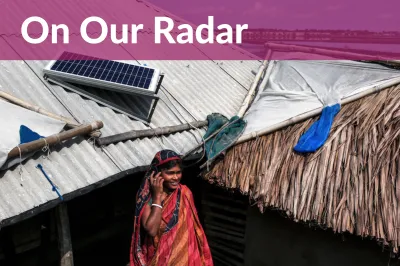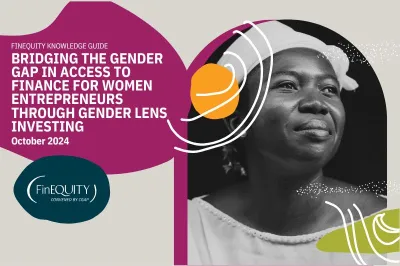Women's Empowerment Is Complex, Multidimensional, and Context-Specific; Measuring Empowerment Should Be Too

There are numerous validated metrics of women's empowerment, as demonstrated by FinEquity's mapping of women's economic empowerment (WEE) measurement tools. However, existing measures often focus on economic drivers of empowerment, such as increased household income and assets. While these factors are objective, research shows that women's empowerment is often more nuanced. Measures such as agency and mobility, although more difficult to quantify, can provide a more accurate snapshot of empowerment. Furthermore, research shows that factors relevant to empowerment can vary, to an extent, by geographical and cultural context.
At WEE-DiFine, we identified three studies that have reconsidered standard approaches to the measurement of women's empowerment with surprising results. These studies highlight why creative and comprehensive approaches to the measurement of empowerment are important. Furthermore, they illuminate pathways for future research.
Expanding measures of empowerment can reveal additional pathways of impact
Bedoya et al. 2019 present two measures of women's economic empowerment while evaluating the impacts of an ultra-poor graduation program in Afghanistan. In keeping with peer studies, the researchers first employed a standardized index, or composite measure, focused on women's decision-making in household finances and expenditures. When measured with this index, no statistically significant impacts on women's empowerment were found. A second index added measures of women's voice and agency, such as aspirations for daughters and political involvement. When measured with this more comprehensive index, large and statistically significant impacts on empowerment were detected. These results emphasize the importance of defining empowerment expansively, as .
The way an indicator is constructed can influence results, especially across contexts
Peterman at al. 2015 reviews evidence on the impact of food and cash transfer programs on women's decision making in Ecuador, Yemen, and Uganda. These three contexts vary considerably on the basis of socioeconomic development and culture, especially with regard to gender dynamics. The researchers found a high degree of variation in a woman's ranking on a decision making index based on how the indicator was constructed. Variations were made on the basis of whether an indicator included a) joint decision-making versus only sole decision-making, b) a measure of who makes the final decision in case of conflict, and c) a woman's preference for who makes decisions in certain realms. This variation held true across households and also across countries. These findings suggest that decision-making indicators may need to be validated across geographical and cultural contexts to generate robust results. They also highlight the need for further research on the measurement of decision making across contexts.
Innovative approaches to measuring empowerment can generate practical advantages in the field
Innovative methodologies can generate more practical means of measuring women's empowerment, including significantly reduced time and cost burdens. Additionally, while validated, off-the-shelf measures of empowerment need to be generalizable, context-specific adaptations are also essential for accurate data. Both of these points are illuminated by Jayachandran et al. 2021. The multifaceted nature of women's empowerment often necessitates lengthy survey modules. However, the researchers combined qualitative surveys and machine learning to generate a five-question index of women's agency, an aspect of women's empowerment, with a sample of women in northern India. They found that a five-question index created from questions regarding decision-making in purchases, decision-making regarding children's healthcare, and physical mobility was more predictive of women's agency than an index generated from a lengthy 63-question questionnaire. While the importance of economic decision-making is in keeping with commonly used measures, the relevance of physical mobility is not: northern India places more constraints on women's mobility than in other contexts.
Final takeaways
These studies illustrate that - qualitative research can illuminate cultural nuances and identify new domains of empowerment worth measuring. Additionally, further research is required to better understand less well-researched domains of empowerment, such as decision making. Finally, country or region-specific validation of measures, both old and new, are important in order to generate reliable results. In these ways, researchers can reach a better understanding, by context, of what it means to be an empowered woman.



Good morning.
Very informative and relevant for my proposed reseach .
More related information will be appreciated.
Develop indicators to measure womens empowerment - basic needs for low income women (e.g Lockers)
Leave a comment